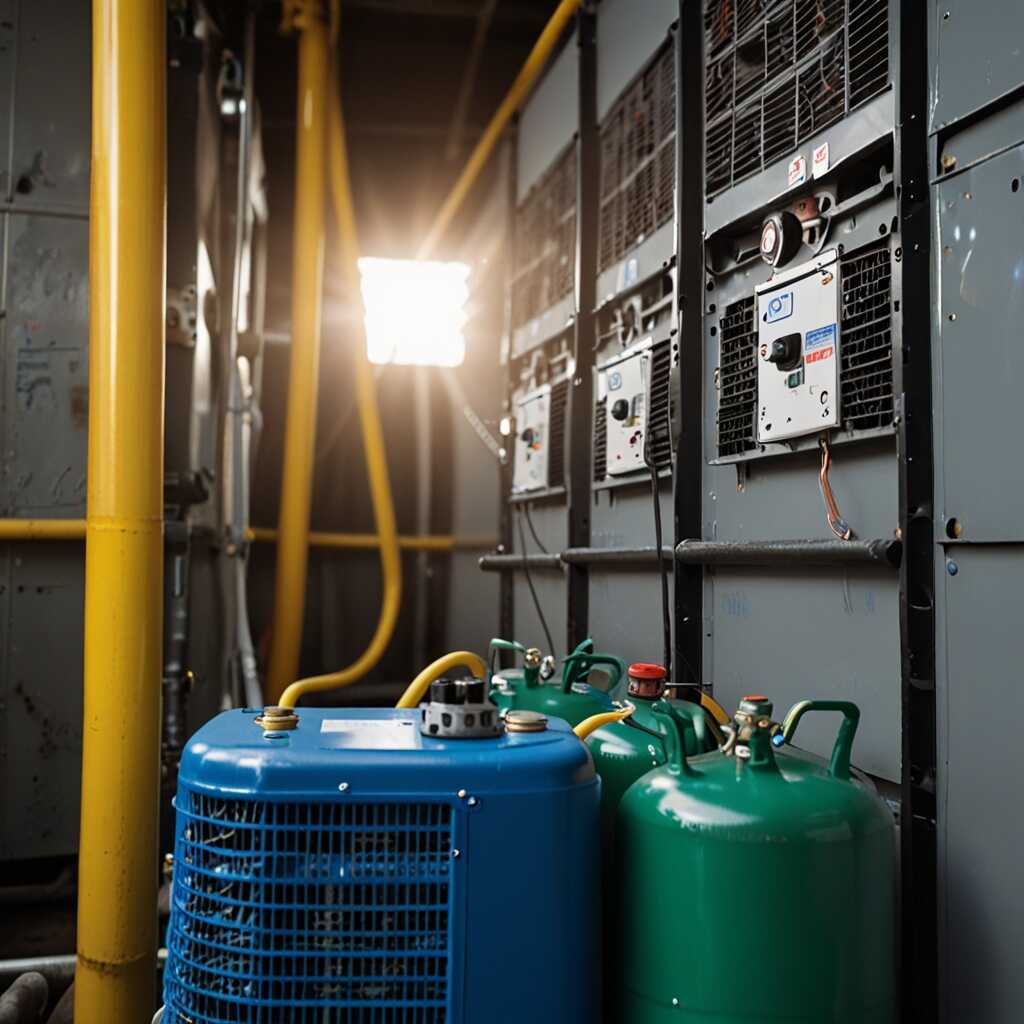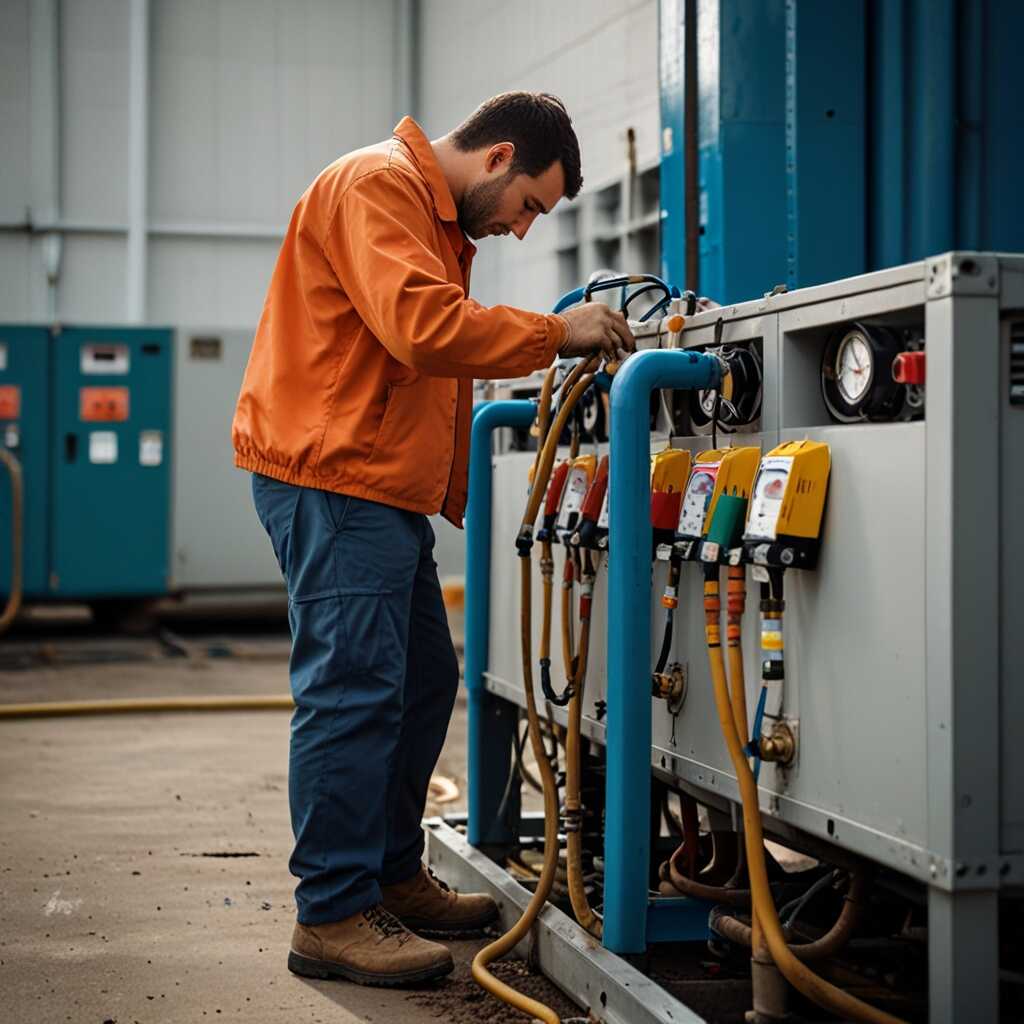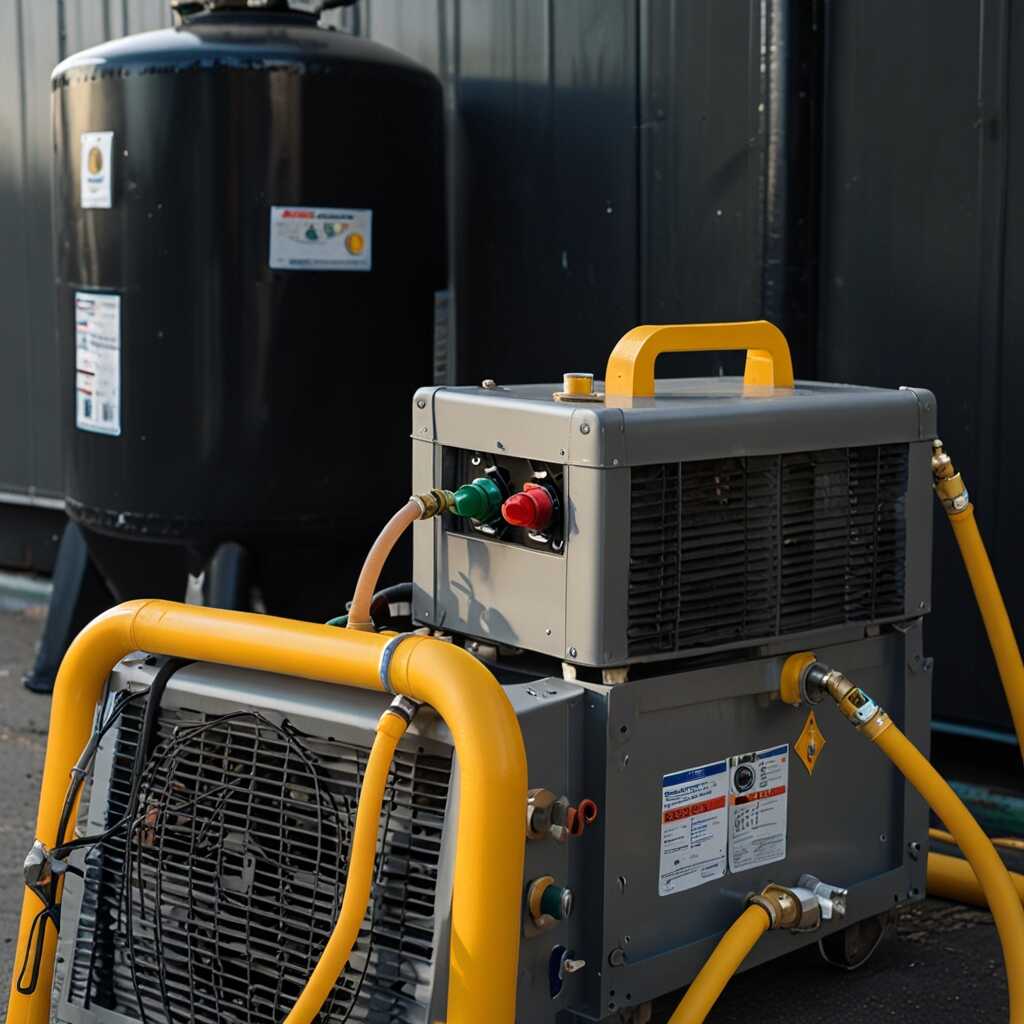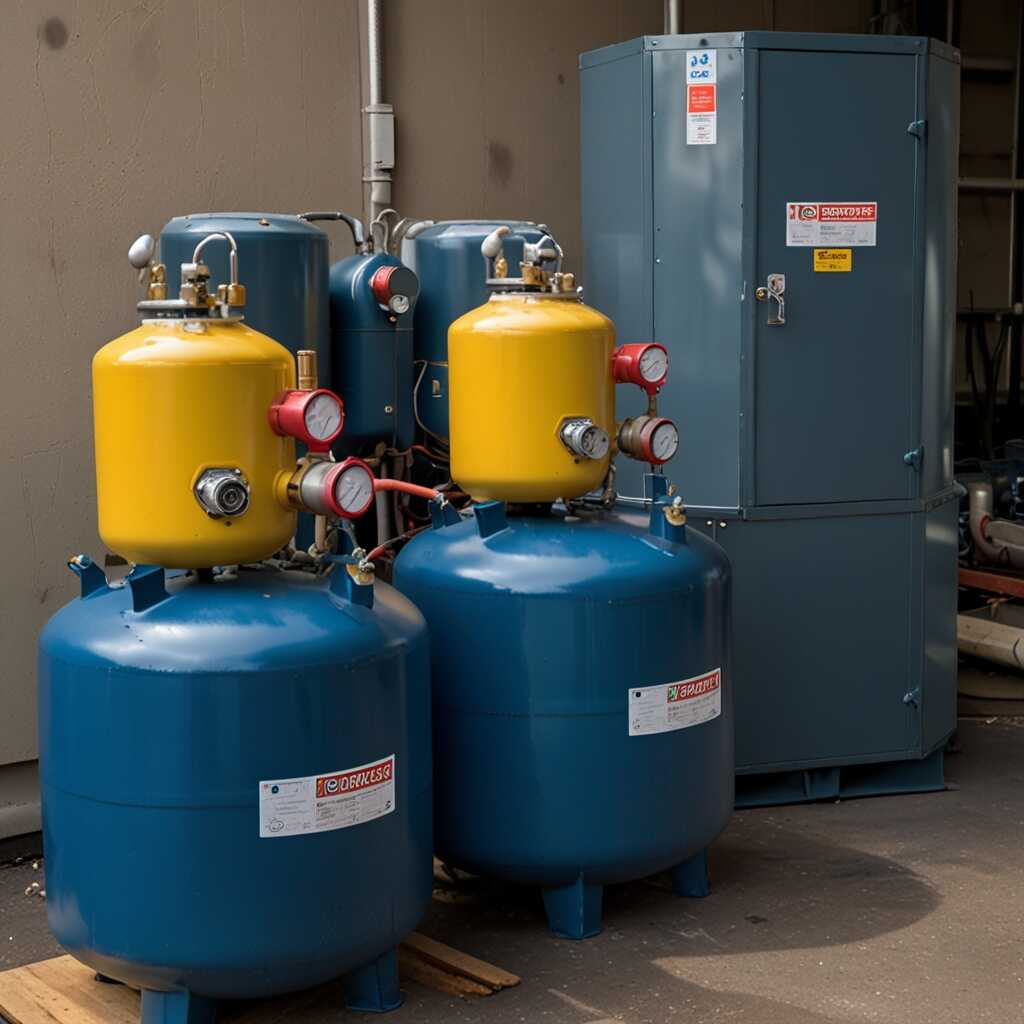Two-stage refrigerant recovery systems achieve deeper vacuum efficiently by using advanced techniques for refrigerant extraction. These systems work by employing two distinct compressor stages that enhance the pressure differential, leading to more effective removal of refrigerant. Refrigerant Recovery Pro emphasizes that understanding these systems can significantly improve HVAC professionals’ refrigerant recovery processes. By integrating this knowledge, technicians can optimize their recovery methods, ensure compliance with industry regulations, and enhance the longevity of their equipment.
Unique Design Aspects of Two-Stage Refrigerant Recovery Systems
Two-stage refrigerant recovery systems have unique design features that set them apart from single-stage models, enhancing their efficiency. These systems utilize two separate compressors to achieve deeper vacuum levels. The first stage reduces pressure, while the second stage further enhances the vacuum. This two-step process allows for more effective removal of refrigerants, especially when moisture is present. Key components such as advanced filters and manifold designs help facilitate this process. Research shows that two-stage systems can typically achieve vacuum levels around 500 microns or lower, as compared to single-stage systems that often struggle to reach these levels reliably.
Key Components Enabling Deeper Vacuum
The design of two-stage refrigerant recovery systems includes essential components that optimize performance. These components are specifically engineered to enhance reliability during refrigerant removal. The dual compressor system is the most significant feature. The first compressor reduces pressure rapidly, while the second compressor efficiently removes remaining gas. High-quality vacuum gauges provide precise readings, ensuring the user can monitor performance accurately. Durable and sturdy valves prevent leaks and enhance overall system reliability. Additionally, specialized filters help eliminate contaminants that could hinder vacuum efficiency. These components work together to achieve impressive vacuum levels, making two-stage systems a preferred choice in HVAC applications.
The Importance of Vacuum Levels in HVAC Systems
Vacuum levels are crucial in refrigerant recovery processes. Optimal vacuum levels can range from 500 microns to 1,000 microns for efficient recovery. Maintaining these levels enhances performance by preventing contamination and ensuring safe refrigerant handling. Two-stage systems play a significant role by achieving deeper vacuum levels quickly. They help remove moisture and ensure complete refrigerant evacuation. This enhances system reliability, reduces potential for system failure, and prolongs equipment lifespan. A reliable vacuum prevents compressor damage, leading to better overall efficiency.
How Two-Stage Systems Achieve Deeper Vacuums
Two-stage refrigerant recovery systems provide enhanced performance by utilizing a two-pump design. The first stage removes the bulk of the refrigerant rapidly, while the second stage creates a deeper vacuum. This design helps achieve vacuum levels below 500 microns. By reaching lower pressures, these systems can eliminate moisture and non-condensable gases effectively. The result is a cleaner, more reliable recovery process. Proper testing of tube connections is essential to prevent leaks, ensuring the deepest vacuum level. Two-stage systems are designed for HVAC professionals who require reliable and efficient refrigerant recovery.

How Two-Stage Systems Optimize Recovery Efficiency
Two-stage refrigerant recovery systems operate by using two separate compressors to create lower pressure and achieve deeper vacuum levels. This design allows for more effective refrigerant recovery and reduces the time required to achieve optimal vacuum. The result is a significant improvement in energy cost savings and overall efficiency, making these systems essential for HVAC professionals. Compared to single-stage systems, two-stage systems often deliver a reduction in recovery time by nearly 50%.
Key Components Enhancing Efficiency in Two-Stage Systems
Two-stage systems feature advanced components such as dual compressors and specialized vacuum pumps that enhance recovery efficiency. The first stage removes the bulk of refrigerant vapors, while the second stage creates an even more profound vacuum, effectively extracting any residual refrigerants. This two-phase approach ensures the system can handle various refrigerants and conditions, improving overall performance. The energy efficiency of these systems helps reduce operational costs while ensuring regulatory compliance with refrigerant disposal standards. The durability of their components contributes to reliable long-term use and minimizes maintenance needs.
Key Numerical Data on Vacuum Levels
- Two-stage systems can achieve vacuum levels down to 25 microns.
- Single-stage systems typically only reach about 150-200 microns.
- Recovery time can improve by up to 50% with two-stage systems.
- Two-stage systems recover refrigerant faster than single-stage options.
- Using deeper vacuums ensures more efficient refrigerant recovery by 30%.
- Testing reveals that two-stage systems require 50% less effort to reach deeper vacuums.
- They typically weigh around 10-20% more than single-stage models, enhancing durability.

Analyzing the Differences Between Single-Stage and Two-Stage Systems
Single-stage and two-stage refrigerant recovery systems differ mainly in their ability to create vacuum levels. Single-stage systems use one compressor, while two-stage systems utilize two compressors, allowing them to reach deeper vacuum levels. Typically, two-stage systems can achieve around 0.5 to 1.0 microns of vacuum, while single-stage systems usually reach about 5 to 10 microns. This enhanced vacuum level in two-stage systems leads to better efficiency in refrigerant recovery and lower residual refrigerant in the system. When selecting a system, consider factors like the type of refrigerant, required vacuum level, and system size.
Understanding the Mechanism of Two-Stage Systems
Two-stage refrigerant recovery systems enhance performance through a dual-compressor setup. The primary compressor reduces the pressure significantly, while the secondary compressor ensures deeper vacuum levels. This design improves reliability and efficiency by allowing the system to work through the refrigerant recovery process quickly. Two-stage systems are built to handle a variety of refrigerants, ensuring it meets diverse HVAC needs. This comprehensive design contributes to a reduction in residual refrigerant, which helps comply with environmental regulations. Experience and testing prove that two-stage systems deliver impressive performance across various applications.

Essential Techniques for Maximizing Two-Stage Systems
Two-stage refrigerant recovery systems provide several benefits including deeper vacuum levels and enhanced recovery efficiency. Users can achieve greater reliability in refrigerant recovery tasks by implementing effective techniques. Analyzing performance data from various brands can help HVAC professionals select the most efficient equipment. Typically, well-performing two-stage systems can achieve vacuum levels as low as 500 microns, which is crucial for optimal refrigerant recovery.
Understanding Vacuum Levels in Two-Stage Applications
Vacuum levels are critical for effective refrigerant recovery. Two-stage recovery systems are designed to achieve low vacuum levels that enhance the performance of HVAC applications. Systems can reach vacuums of 500 microns or lower, improving the reliability and efficiency of the recovery process. Utilizing advanced testing methods ensures that technicians can confirm their systems work at optimal efficiency. This helps in achieving better results in refrigerant removal and minimizing potential refrigerant emissions.
Positive Outcomes of Advanced Recovery Methods
- Higher vacuum levels result in more effective refrigerant recovery overall.
- Two-stage systems minimize the risk of refrigerant contamination.
- They help achieve better system efficiency by ensuring full refrigerant recovery.
- Operating two-stage systems can expand an HVAC technician’s service offerings.
- They reduce moisture in HVAC systems, preventing future malfunctions.
- Users notice a decrease in recovery time, boosting productivity significantly.
- Technicians experience improved customer satisfaction due to faster service.

Influence of Refrigerant Properties on Recovery Performance
Refrigerant properties greatly impact recovery efficiency in two-stage systems. Vapor pressure, temperature, and molecular weight influence the speed and effectiveness of recovery. For instance, refrigerants with lower boiling points evaporate and recover quicker. This enhances the overall efficiency of the recovery process. Understanding refrigerant characteristics leads to better results through informed choice and strategic application. The effectiveness of recovery systems can arise from selecting appropriate refrigerants, allowing HVAC professionals to tailor their approaches for optimal operation. A variety of refrigerants such as R-410A and R-134a have different impacts on the performance of recovery systems. Knowing these distinctions helps technicians achieve desired recovery outcomes and improve refrigerant management practices.
Understanding Refrigerant Characteristics for Optimized Recovery Strategies
To optimize recovery strategies, it is crucial to understand the specific characteristics of refrigerants. For instance, R-410A has a higher vapor pressure compared to R-22, affecting how quickly these refrigerants can be extracted from systems. Additionally, the molecular weight of a refrigerant can influence how effectively it will move through the recovery system. Professionals should also consider the environmental impact of refrigerants, especially with changes anticipated by 2025. Utilizing the right refrigerant and recognizing its properties not only enhances recovery efficiency but also ensures compliance with regulations. Successful testing of recovery strategies relies on data-driven comparisons of how different refrigerants perform under various conditions.
Emerging Technologies in Refrigerant Recovery Systems
Two-stage refrigerant recovery systems incorporate innovations such as advanced vacuum pumps, specialized recovery cylinders, and automated controls. These technologies enhance reliability and operational efficiency. For instance, automated controls allow HVAC technicians to program settings for optimal recovery performance. New vacuum pumps can achieve vacuum levels below 500 microns, significantly improving recovery speed and effectiveness. These emerging technologies provide essential tools for HVAC professionals aiming to optimize refrigerant management processes.
Advanced Vacuum Pump Technology
Advanced vacuum pump technology represents a crucial element of modern two-stage recovery systems. These pumps are designed to achieve deep vacuum levels quickly and reliably. Many current models can reach levels up to 250 microns, ensuring complete refrigerant recovery. Technicians can easily monitor performance through integrated digital displays. Features such as variable speed operation further enhance efficiency, allowing these pumps to adapt to different refrigerant types. This capability proves useful during diverse HVAC applications, making recovery processes both fast and reliable.
Comparative Insights on Industry Brands
- Brand A offers lightweight models ideal for small jobs but lacks advanced features.
- Brand B features durable construction, perfect for heavy-duty work, yet it’s pricier.
- Use cases in residential HVAC utilize lighter models for home repairs.
- Brand C is user-friendly, making it accessible for beginners but limits deep vacuum capabilities.
- Commercial users often prefer robust brands for efficiency and reliability under pressure.
- Brand D ensures advanced features suitable for professional technicians but may have steep learning curves.
- Technicians targeting energy-efficient solutions may favor brands with regulatory compliance features.
Compliance with Regulatory Standards for Refrigerant Recovery
The key EPA regulations governing refrigerant recovery practices include the Clean Air Act, specifically Section 608. This section requires HVAC professionals to recover refrigerant using approved methods. By adhering to these essential regulations, technicians ensure that they prevent harmful refrigerant emissions. This compliance not only aligns with regulatory mandates but also enhances the efficiency of HVAC operations and equipment longevity. The organizations involved in enforcing these regulations include the Environmental Protection Agency (EPA) and local regulatory bodies. According to EPA standards, the maximum allowable limit for refrigerant emissions is 0.25 percent for specific refrigerants.
Understanding EPA Section 608 Regulations
EPA Section 608 regulations provide clear guidelines for refrigerant recovery practices to minimize environmental impact. Technicians must use certified recovery equipment designed to handle high volumes of refrigerants effectively. Following the guidelines ensures compliance and enhances refrigerant management techniques. Technicians can enhance their operational efficiency by regularly reviewing their recovery practices against these regulations. Training and certification also help HVAC professionals maintain knowledge about current EPA compliance standards and best practices. This proactive approach leads to reliable operations and contributes positively to environmental protection.